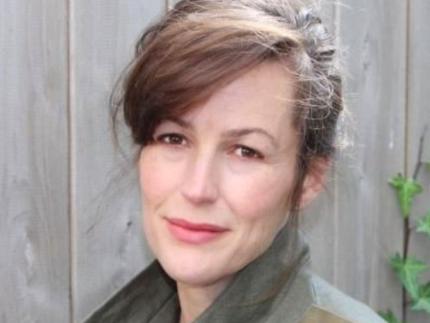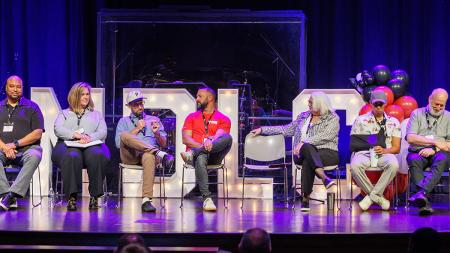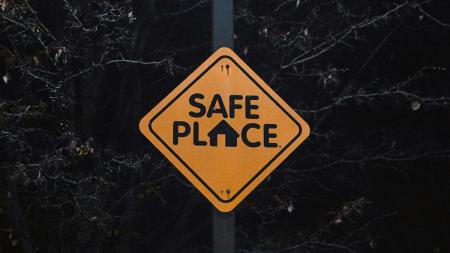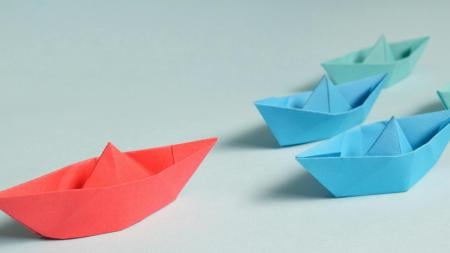Loving One Another by Design

Kicking off Calvin University’s January Series 2023 on Monday, Jan. 9, Sara Hendren told the stories of several imaginative, problem-solving people who appear in her book, What Can a Body Do? How We Meet the Built World.
Hendren, who is an artist, design researcher, and professor of engineering, highlighted several people in her book who use their bodies in a variety of ways to confront and adapt to physical challenges they face.
There is a father with one arm who devised a way to change his baby’s diapers. A quadriplegic woman found creative ways to put on her makeup and to write notes to her friends. And an unusual – and successful – community in the Netherlands is set up for people with Alzheimer's disease.
“These are people who find ways to make adaptations so that they and others can live more fully in the world,” said Hendren.
“These are people who go to the margins of experience and get insight into developing a better ‘mousetrap’ logic.”
The January Series is a free 15-day lecture series that takes place each year at Calvin University and, says promotional material, “aims to cultivate deep thought and conversations about important issues of the day in order to inspire cultural renewal and make us better global citizens in God's world.”
Running weekdays at 12:30-1:30 p.m. (EST) through Jan. 27, the January Series takes place in Calvin’s Covenant Fine Arts Center. Online viewing is also available; simply register to watch.
In her presentation Hendren said that most of us, especially as we age, find that we need tools, methods, and strategies to help us navigate the world. We wear glasses, use hearing aids, need canes or walkers to get around – and in many instances we rely on the goodness and kindness of others to help us face and address whatever disabilities arise in our lives.
“What is marvelous is the body in its own environment,” said Hendren. “There is wonder and urgency in human bodies’ finding a way to make adaptations to live in the world.”
In her book, Hendren says that nearly every human being needs to use assistive technology – “meant to bridge the gap between body and world” – at one time or another.
In a series of stories in her book, she invites readers to consider what the body’s capacity for adaptation can be. Can we, she asks, learn about and be inspired by how others have addressed disability and see that we live in an interdependent world?
Here are some of the stories she shared during her presentation, helping viewers imagine a future marked by communities of people who together meet the wide range of humanity’s collective needs and aspirations.
Showing the image of a slender man in a ponytail attending to his newborn child on a diaper-changing table, she said, “This is Chris, using soft cords he made to help lift the baby’s feet so that he can change the diaper with his arm. Here also is a video of how he uses his one arm to twist and fasten a rubber band into his hair to make the ponytail.”
Chris was born with one arm and used many different prosthetic arms over the years, but, said Hendren, he was able through technology and his own wits and skills to adjust to living with one arm.
He built a tool to help him change a diaper, and he learned to use his one arm to tie back his hair.
Going on, she showed a picture of a technician at Jaipur Foot in India fitting a man with an inexpensive, low-tech lower limb prosthesis made of rubber.
“This is a wonderful charitable project that has distributed for free one and a half million of these prostheses to people around the world,” she said.
Then there is Cindy, who was in a coma and became a quadruple amputee at age 60. She received an electric arm, but she didn’t like it because “it was hot and heavy and not useful in opening a jar of cold cream.”
So Cindy fastened a plastic coat hook with a sticky back to the jar and used that to twist off the cap. She also helped conceive and fashion a simple device through which a ball point pen can be situated for writing.
“These are examples of things that could matter to any of us if and when our bodies change and we need help,” said Hendren.
In her book Hendren also tells a story about Gallaudet University in Washington, D.C., a school for the deaf that “honors the condition of deafness by using architecture to lower the walls for greater sight lines and by creating round corners in the hallways to help prevent people from running into one another because they can’t hear another person coming.”
Also in Washington, D.C., said Hendren, she visited a coffee shop run by deaf people who use sign language to communicate with one another. You write your orders out, and they are displayed on a big TV screen. “Why rush to technological fixes when you can simply intervene and make a difference at a minimum of moments?” she asked.
Whether through high-tech or simple adaptations, we are making adjustments all of the time to live in the world, said Hendren. Take Steve Saling, who has advanced ALS (amyotrophic lateral sclerosis, a motor neuron disease), she added.
Steve lives in an automated residence that he helps control with a cursor attached to his glasses and a wheelchair-mounted tablet.
“This helps to make life worth living for him,” said Hendren. “He has a residence to help him live comfortably as long as possible.”
With adaptations large or small, complex or simple, we can see the need we have for one another, both in creating adaptations and in sharing together in their wonder and usefulness, said Hendren.
Yet another account in her book looks at a health village in Weesp, a small community in the Netherlands. This health village is for people with Alzheimer’s disease and dementia.
“This is a residence that has a focus on helping to quell the anxiety of (and build relations between) the residents,” said Hendren. “Wonder and urgency are at the heart of its design. It is actually a little town.”
The health village includes storefronts and a restaurant that is open to residents and the public. It has a hair salon and a theater. It also has streets and a big plaza.
“The village is set up in a way for people who live and work and visit there to have human and humane interactions,” said Hendren.
Another compelling story features Alice Sheppard of Kinetic Light, who is a wheelchair user and a dancer.
“Alice wanted a ramp built – but not for getting into a building,” said Hendren. “She wanted a ramp for a stage on which she could dance.”
Hendren agreed to take the project on and, with the help of her engineering students, built a series of ramps on which Alice could perform “to make beauty with movement for dance in her wheelchair.”
In her design work Hendren likes to consider what new things can be built to highlight “the exchange between and among bodies and in the process bring up the question of who we are together in this human drama.”
Overall, as humans, she said, “We are dependent. . . . Our usefulness to one another may be foundational in living a desirable life.”


